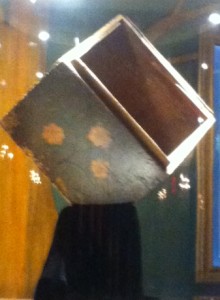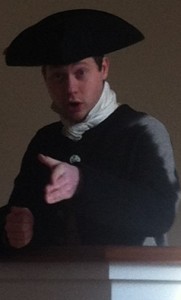-by Jon Cotton
Any interesting falsehood becomes “tour guide truth.” Rumor and speculation are so ingrained in the culture that already within bostontourguide.org’s short two weeks it has seemed an editorial forced move to write a few myth-slaying articles. Delilah has even started a column called “Truth and the Tales We Tell.” Idiomatically, one must “wear big boots” to navigate the information disseminated to our guests. This article is in praise of a museum site which surprised me with its integrity and forced me to recalibrate my evaluative bearings.

The real McCoy
It began two days ago when I visited the Tea Party Museum (officially “Boston Tea Party Ships and Museum”). I wrote an article which was very positive, and before I published it I emailed a draft to a knowledgeable tour guide, and also to the the executive director of the museum, Shawn Ford. Shawn asked me to call him.
“I don’t want to dispute anything that’s a matter of opinion,” he said, “but…” and he referred to my treatment of the “Robinson Half Chest.” I had used the description “an actual chest from the Boston Tea Party” together with the phrase “so they say.”
“That bothers me,” he said.
I didn’t want to alienate Shawn, but I’m committed to journalistic integrity, so I cautiously said “Okay… is there a reason to believe it’s authentic?” His answer excited me and surprised me. It turns out the Robinson Half Chest has been subjected to the kind of forensic investigation you see on criminal shows. The chest was sent to a company near Chicago called McCrone Associates.
I hung up the phone, and in private eye mode I dialed Chicago and got Joe Barabe on the horn, the man who did the analysis. The museum spent fifty thousand dollars to investigate the chest. The result was that particles were detected consistent with the uses to which the Robinson family put the chest – it was used as a receptacle for school supplies – but it was also found to be constructed of wood local to Boston, to have paint residue from the period, and to have residue of tea and of salt water.
The Robinson family lives in Texas but traces its ancestry to Boston, to John Robinson, who was 15 years old in 1773. He was walking along the beach, so the story goes, and he ran into this chest near Griffin’s Wharf which had not been properly destroyed. My research indicates that in the days just after the tea was thrown, parties were sent out to ensure that any chests still floating about were properly destroyed.
My skepticism had come from the common knowledge that the tea party was conducted under solemn conditions of conduct: identities were to be kept secret, property was not to be destroyed – and no tea was to be taken! However, John Robinson is not known to have been one of the sons of liberty, did not fall under its constraints, and was of a rash enough age to steal such a chest and hide it in his house.
Of course it can’t be proven mathematically that the chest was thrown from one of the Boston ships. The claim can only conform to the standards of historiography. But, to my happy surprise, it seems to do that.

